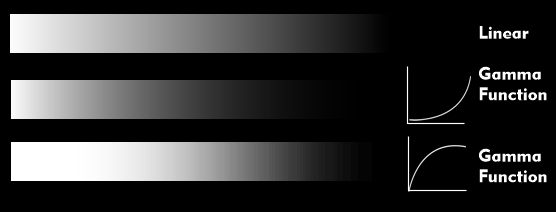gamma correction
Human brightness perception is nonlinear, meaning that perceived brightness does not increase linearly with actual brightness. In display technology, this relationship is referred to as gamma `gamma` or gamma value. The brightness representation of recording and reproducing peripherals such as digital cameras, video cameras, displays, projectors and printers is also non-linear. A linear increase in the voltage used to control the brightness of the hues results in a nonlinear increase in the perceived brightness.
In order to adapt the rendering of the various peripheral devices to the human perception of brightness, certain brightness ranges must be raised, while others must be attenuated. This raising or weakening is done by means of gamma correction based on lookup tables.
Gamma values are determined on the basis of lookup tables, which result in a linear increase of the perceptible brightness or color impression. To equalize the differences in brightness, the detected values are computationally corrected using gamma correction.
The technique of gamma correction is not limited to monitors, printers and digital technology, but is also used in analog video recording technology, since the recording elements exhibit non-linearities in the brightness characteristic curve. The correction is done by gamma curves. A linear gamma curve is a tone value curve in which the brightness increases linearly with the voltage. It has a gamma value of 1. If the gamma value is greater than 1, the brightness increases faster, while it becomes darker if the gamma value is less than 1. Displays have gamma values between 2.2 and 2.5, and in image sensors gamma corrections of 1/gamma are used for pre-compensation.
Correction functions in HDR technology
In addition to gamma correction, which is also used in SDTV, HDTV and UHDTV, there are two transfer functions for HDR technology, High Dynamic Range (HDR), for brightness perception: the optical-electrical transfer function, OETF, for image acquisition and the electro-optical transfer function, EOTF, for image reproduction. The transfer functions are part of the ST.2084 standard of the SMPTE. They work with two nonlinear correction characteristics: Perceptual Quantization( PQ) and Hybrid Log Gamma( HLG), which are also used for transfer and mastering.


